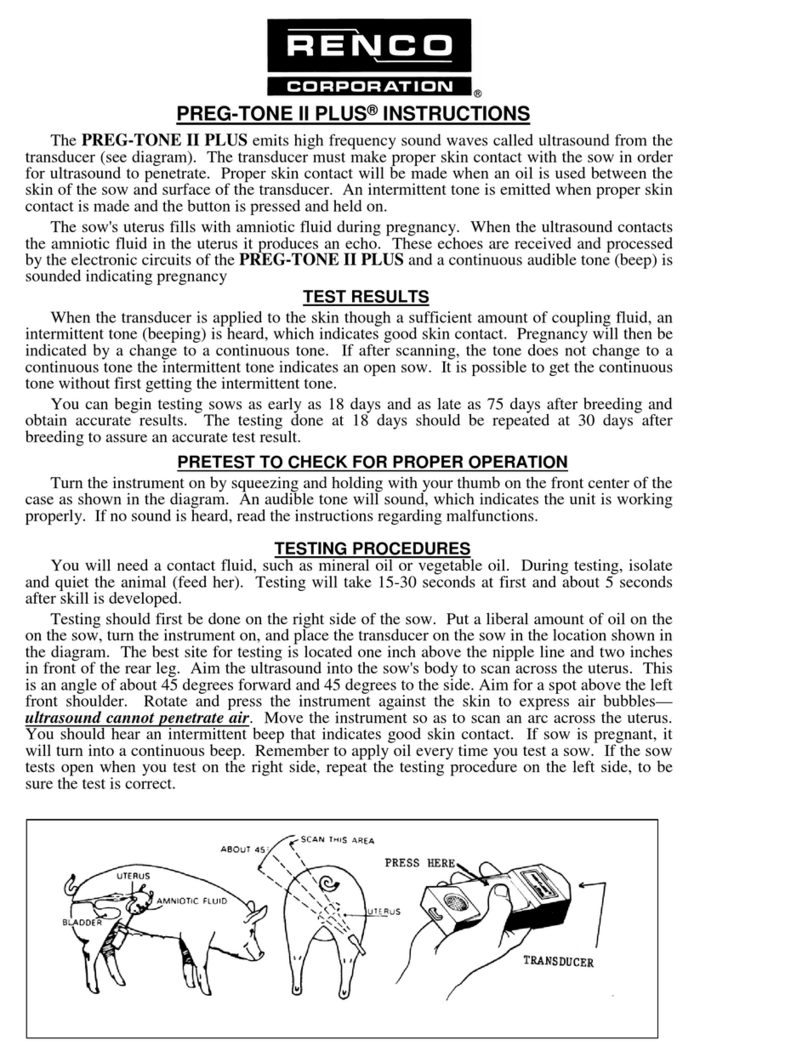
©2006 Renco Corporation. All rights reserved Page 3 of 3
LM-12 Inst Man Short Form-AB.doc 12/24/06
battery for extended periods of time, say over 30 hours, as it may actually shorten the battery
life.) The instrument is deactivated and not usable when the charger is connected. When
the battery becomes discharged and no measurement is being made, a horizontal bar will show
in place of the “0”, which indicates only a brief time remains. The “0” reappears when a
measurement is made.
Nickel Metal Hydride Battery (NiMH or NMH): Battery is “green” and does not need to be
recycled. The Renco NMH battery uses special cells and should only be replaced with Renco
replacements to avoid damage and shortened battery life. Warranty is void if battery is
replaced with other than a Renco replacement. To replace battery, remove top cover by
removing the two end screws. Unplug battery, replace with new battery and replace cover.
The instrument will automatically turn off if it has been on for more that two minutes during
which there has been no measurement activity. This protects the battery from discharge if the
instrument is inadvertently placed upside down on a table, which might keep the Power button
actuated.
Plastic Test Cylinder: This is provided for verifying that the instrument is operational. Wet
the end of the probe or Cylinder and apply the probe to the Cylinder. Do not allow the opposite
end to be in full contact with any surface and be sure the hole is not plugged. The reading
should be approximately 25mm, depending on humidity, or approximately 30mm for
instruments purchased in Australia and New Zealand. Since the Lean-Meater is a crystal
controlled device, the actual reading is not as important as just getting a reading. If there is any
internal problem you will most likely not get any reading at all.
Service and Help
For help with any questions or problems in regard to the use of the Lean-Meater, RENCO
provides free telephone technical support during the warranty period, which may be obtained
by reading the FAQ’s on our Internet site, emailing or calling. (Our phones are open M-F, 8am
to 4pm Central Time.) We do not charge for online or telephone technical support. Use the
original carton to return the instrument to the factory for service and regardless of problem, be
sure to return instrument,probe,cable and charger.
CAUTION! DO NOT USE THE LEAN-MEATER ON HUMAN BEINGS.
“Ultrasound for Ultra Profits”®
116 Third Avenue North, Minneapolis, MN. 55401 USA
Tel: 800-359-8181 Fax: 612-333-9026
Internet: http://www.rencocorp.com Email: techsupport@rencocorp.com





















